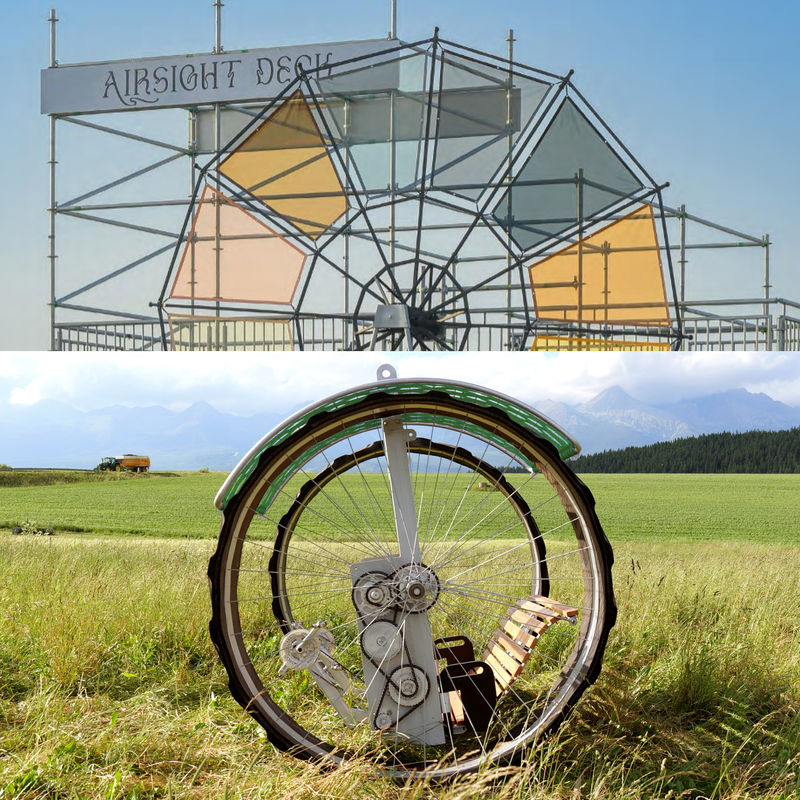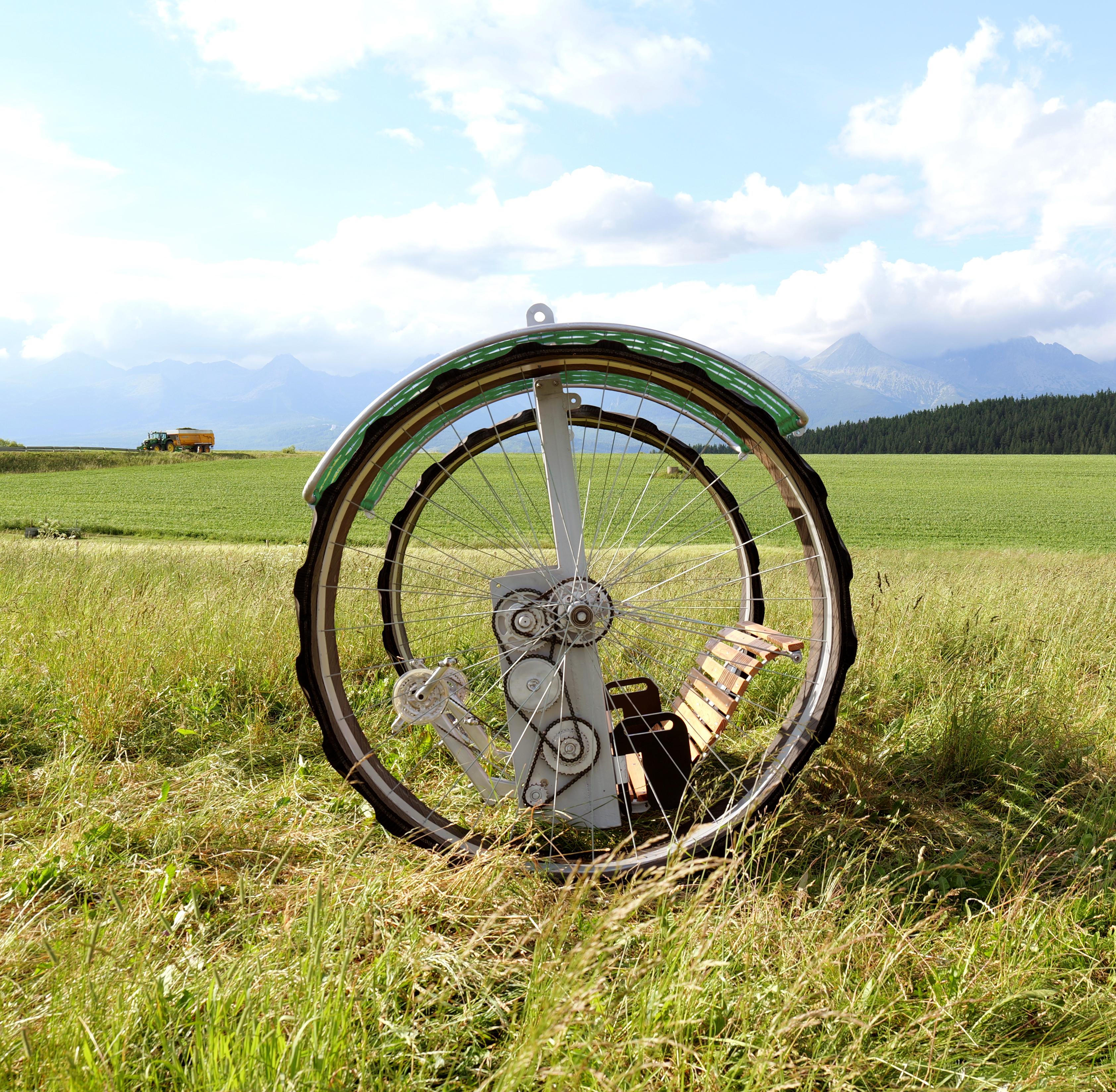
Introducing the Winners of the Pohoda Visual Art Contest 2025
An incredible 82 artists and art collectives entered the 9th edition of the Visual Art Contest this year. From all the submitted works, our expert jury selected two pieces that will become part of the Visual Stage at Pohoda 2025. At Trenčín Airport, you will be able to experience the site-specific installation Vzduchohľadňa / Airsight Deck by Dusts Institute (Adam Hudec, Tomáš Tichomirový, Duha Samir) and Agrofuturism – Silence Grows Over Steel by Jozef Pilát.
02. July 2025
Pohoda Festival has, for the ninth year running, launched its open call for the Visual Art Contest, inviting the international artistic community to submit proposals for artworks to be realised on the festival grounds at the airport. This year’s edition was exceptional. A total of 86 carefully prepared projects were submitted by a diverse range of established artists and art collectives. This number is a great honour for Pohoda Festival and the Pohoda Visual Stage alike. At the same time, it highlights the limited space available for exhibiting and realising artistic projects in Slovakia,” adds Prof. Ilona Németh, curator of the Visual Stage at Pohoda.
Dusts Institute – Adam Hudec, Tomáš Tichomirový, Duha Samir
Vzduchohľadňa / Airsight Deck
2025
Airsight Deck is an interactive installation by the collective Dusts Institute, making visible what we usually overlook in the air around us. A five-metre rotating wheel fitted with twelve coloured filters allows visitors to gaze at the horizon through various air scenarios. Each filter represents a specific atmospheric condition, based on real data collected throughout the year in Trenčín on airborne dust particles.
Dust in the air comes from a wide range of sources – from soil, combustion, vegetation, or industry. Each type of particle scatters light differently and alters the colour of the air. Even what we cannot see can tint the atmosphere grey, yellow, or orange, depending on how much dust is present and where it comes from.
Airsight Deck invites visitors to experience how the colour of the air changes during smog, summer heatwaves, or pollen season. Looking through the filters shows how dust shapes the horizon – even turning the iconic festival sunset into a subtle reminder of what we all breathe together. The installation also offers a journey through time: letting us witness how air changes over the course of a year while also envisioning future scenarios shaped by the climate crisis.
Bio Dusts Institute is an interdisciplinary platform founded by Adam Hudec, Duha Samir, and Tomáš Tichomirov. It brings together architects, scientists, and activists to highlight environmental issues through art and research, and to promote sustainable solutions. Their projects include interactive installations, educational workshops, performances, and exhibitions that bridge art, science, and the public to inspire care for the planet.
The interactive installation Airsight Deck by Dusts Institute makes visible what we usually can’t perceive in the air. A five-metre rotating wheel fitted with twelve coloured filters allows visitors to view the horizon through various air quality scenarios. Each filter represents a specific atmospheric condition, based on real data about airborne particles collected throughout the year in Trenčín. “The jury appreciated the work for its ecological message, its interactivity, and the opportunity it gives visitors to see the Pohoda site from a bird’s-eye view,” adds jury member and Rector of the Academy of Fine Arts and Design in Bratislava, Assoc. Prof. M.Sc Bohunka Koklesová, PhD. 
Jozef Pilát
Agrofuturism – Silence Grows Over Steel
2025
Agrofuturism – Silence Grows Over Steel (2025) is an interactive site-specific installation by Jozef Pilát, telling its own story at Pohoda Festival. Created in collaboration with curator Nina Vidovencová, it imagines a landscape where monocultures have lost the battle to the vitality of unwanted plants. Rather than a narrative of domination, we encounter a vision of connection, reverence, and quiet resilience.
At the centre of the installation stands the z0t0r – a tractor-bicycle powered by two human bodies, set amidst fragments of a monumental thistle. This machine is both myth and memento. Its two wheels carry two meanings: one represents local awareness – grounding in place, language, and body. The other speaks to the global – responsibility, ecological interdependence, and the awareness that no decision exists in a vacuum.
The installation suggests that the technologies of the future might be about symbiosis. Progress is only possible when respect for the past meets the courage to shape the future. If one wheel slows or stops, the z0t0r changes direction or spins in place. But this movement is more than mechanical – it carries a potent metaphor. Turning in place erodes the soil more quickly. Moving forward symbolises the need for balance between what is close to us and what lies beyond. Agrofuturism is not an escape into utopia. It is a return to the soil. To silence. To a seed that doesn’t yet know whether it will grow into an ordinary dandelion or a hydrangea with revolutionary potential.
In this installation, Pilát offers the possibility of planetary healing – one that does not begin with grand gestures, but with small things: the strength of four legs, the shade of a single thistle, and the ability to listen, even when the land has yet to speak.
“Agrofuturism – Silence Grows Over Steel by Jozef Pilát is an interactive, site-specific installation featuring an object named z0t0r—a hybrid of tractor and bicycle, adorned with fragments of a monumental thistle. Agrofuturism is not an escape into utopia. It is a return to the soil. To silence. To a seed that does not yet know whether it will grow into an ordinary dandelion or a hydrangea with revolutionary potential. In his installation, the artist offers a vision of planetary healing—one that does not begin with grand gestures, but with small things: the strength of four legs, the shade of a single thistle, and the ability to listen, even when the land has yet to speak,” adds Assoc. Prof. M.Sc Bohunka Koklesová, PhD. 





